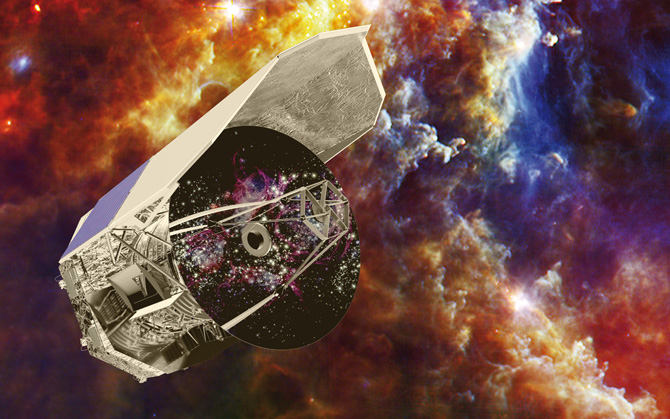Herschel Space Observatory
The European Space Agency's Herschel Space Observatory (formerly called Far Infrared and Sub-millimetre Telescope or FIRST) flew the largest single mirror ever built for a space telescope.

2 August 2018
At 3.5-metres in diameter the mirror collected long-wavelength radiation from some of the coldest and most distant objects in the Universe. In addition, Herschel was the only space observatory to cover a spectral range from the far infrared to sub-millimetre.
Herschel provided the unique possibility to observe, with unprecedented spectral coverage and resolution, a vast number of lines in the spectra of gas clouds produced by atoms and molecules that are present, albeit in small amounts, in the gas. Together with the observation of dust, these atomic and molecular lines were instrumental in tracking down the properties of gas in a vast number of star-forming clouds.
 Close
Close

